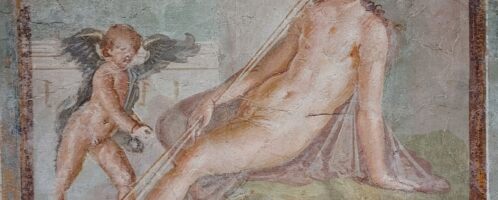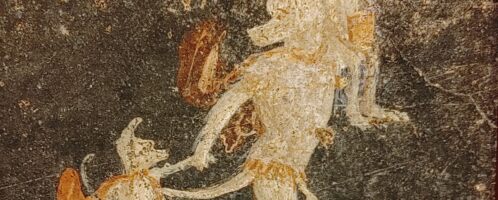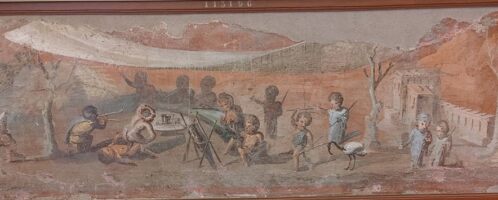Roman mosaic showing chessboard
Roman mosaic showing a chessboard in the shape of a circle. In the corners of the object we can see decorations in the form of ducks. The object is dated to the 1st BCE – 1st century CE. The artifact was discovered in Pompeii, in the so-called Mosaic House with Doves. The object is in the National Archaeological Museum of Naples.











